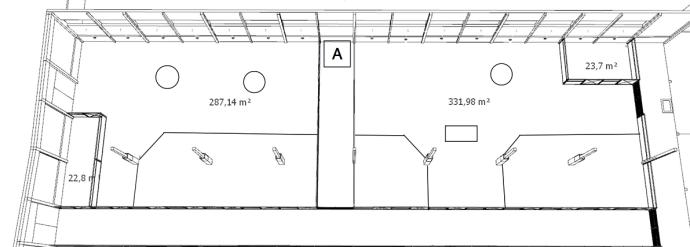Material and method
All animals observed were housed in the indoor quarters for ungulates from the safari park at Kolmården Zoo. The animals were let out during light hours and taken indoor in in the afternoon, before the staff left for the day. During night time there was enough feed to last until next morning.
The animals were held in two inside free stalls in close proximity to each other (as shown in figure below). Both stalls were equipped with straw beds and soft curtain-like visual barriers. Main feed was placed in the round and rectangular objects, but some were also spread around on the floor in the stalls. Browse was offered in several places, tied to objects, pillars or frames.

The behaviour data was collected from the video recording, selected semi-randomly hours during the day, in the afternoon after the staff left and in the morning before they arrived. Both agonistic behaviours and data on the animals’ time budgets were collected (time budgets are presented in full report).
Below show categorized agonistic behaviours collected:
High level aggression
'Includes fighting, biting, butting, chasing or any other aggressive encounter which potentially could be damaging to the recipient.
Low level aggression
One or more individuals of one species move away or is pushed away when an individual(s) of an other species approaches. An individual directs a threat posture at another individual.
Responsible for this page:
Director of undergraduate studies Biology
Last updated:
06/15/16
